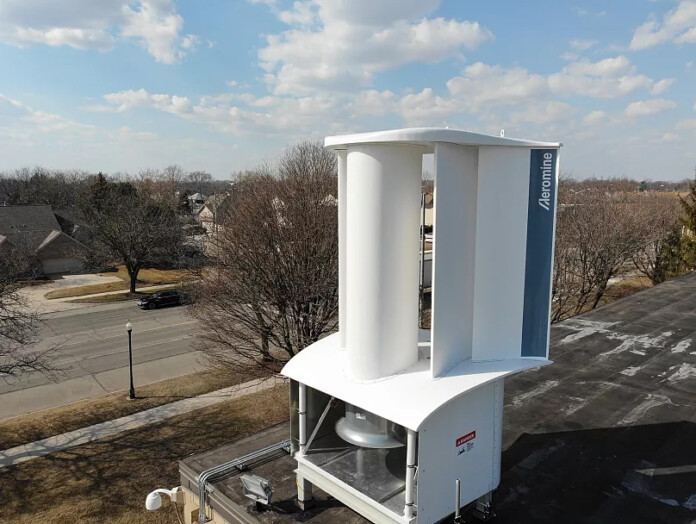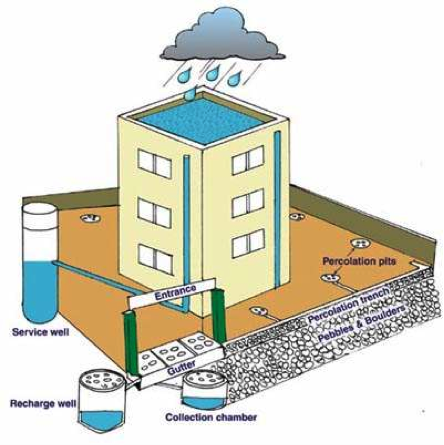Globally, the built environment accounts for 40% of greenhouse gas emissions (GHG). Three materials—concrete, steel, and aluminum—are responsible for 23% of GHG emissions, as reported by Architecture 2030. This has led to the emergence of green building councils and numerous NGOs worldwide, disseminating green building guidelines to professionals in the field. Buildings can now receive platinum awards for achieving full sustainability. While this positive trend deserves our support, there is still room for improvement in integrating the science of architecture from the East with green building technologies worldwide. Going green in construction involves developing a comprehensive water usage strategy, an efficient energy strategy, and a zero-carbon material strategy, all aimed at addressing climate change.
Ancient Science of Architecture
Ancient India’s seers developed an advanced science of architecture called “Vastu Shastra” or “Vastu.” In short, Vastu aligns structures in a way that creates balance with cosmic forces/energies. The layout design suggests the right placement of kitchen, bedrooms, bathrooms, dining and living rooms, as well as the preferred direction of sleep. Natural materials are used for construction, and the science is based on magnetic forces, the rotation of the Earth, movements of the sun, the five elements of the Earth, cosmic energies, and more. The interior and exterior designs embrace the green building strategies mentioned earlier. The seers believed that Vastu-compliant structures contribute to the well-being, happiness, and prosperity of the people who dwell in them. Similar to good diet, exercise, and positive thinking, living or working in a Vastu-compliant building is considered equally important.
Need for an Integrated Approach
While green building strategies are holistic, they do not explicitly encompass well-being, happiness, and prosperity. To learn more about the science and logic behind Vastu, you can refer to the link, which provides a description written by an individual with a doctoral degree in the subject. Additionally, several books are available on the topic.
Strategy that Integrates Concepts from East and West
A transformative strategy for green buildings is to start with a Vastu template and then incorporate other holistic green technological developments. Some houses in India are already built based on these principles, where Vastu experts, architects, and interior designers collaborate to construct green buildings that are Vastu-compliant. Achieving a 100% Vastu-compliant green building will be possible once the cost of natural materials becomes competitive and the latest green technologies become more widely available. Existing structures can incorporate applicable concepts from Vastu and green building guidelines to make progress.
Rural Strategy for The Less Privileged
The Indian Green Building Council (IGBC) may need to develop a robust rural strategy for the approximately half of India’s population living on less than $3.10 per day. Here are a few thoughts to consider:
- Thannal.com in Chennai provides resources on indigenous natural construction materials for this audience.
- Eco-villages offer interesting green concepts blended with sustainable living and community organization.
- Shigeru Ban in Japan constructs houses with recycled paper tubes for disaster zones at a cost of about $200.
- The central government and a few states have built houses for the poor with solar roofs. Consider converting old cruise ships into residential technical schools/laboratories to train this segment of the population.
- Plans to rebuild the slums of Mumbai should be based on a low-cost green strategy.
- Models like Habitat for Humanity in the USA should be encouraged to build green and affordable housing for the poor across India.
- The goal for every built area should be to sustain itself independently, with zero reliance on external energy grids. Micro or mini grids can serve very small structures that cannot afford to be independent.
Now, let us explore some holistic technological developments that can be incorporated into a Vastu-compliant house.
Water Strategy
While numerous technologies have been suggested for efficient water use, rainwater harvesting, wastewater reuse, and water conservation in line with green building guidelines, the following strategies need consideration to make our homes, high-rises, and roads greener:
A) Liquid CO2: Developing a new liquid CO2 laundromat industry, operating on a drop-off and pick-up model serving approximately 50-100 households, could make a significant impact. Liquid CO2 washer cum dryers already exist in the USA and serve the hotel industry. Liquid CO2 is biodegradable, recyclable, and non-toxic. India could save at least 5-10 billion gallons of water per day if a large majority of households, hotels, hospitals, and restaurants adopt the liquid CO2 model.
B) Recharging Groundwater Levels and Making Roads Carbon Sinks: Recharging dangerously low groundwater levels is crucial, as many houses in India depend on groundwater. Currently, the use of asphalt on roads does not recharge groundwater due to its impermeable nature. Porous asphalt, although slightly better in terms of permeability, falls short of desired outcomes. To recharge groundwater effectively, we should explore bio-asphalt that uses lignin, a plant-based waste product from the paper mill industry. Lignin has the potential to be grown in a lab with microbes, as demonstrated by MIT researchers who successfully grew wood in a lab. Further research is needed to assess lignin’s ability to recharge groundwater. Our strategy should aim to develop a biomaterial for our entire road network that recharges groundwater and acts as a carbon sink by utilizing wastewater—a challenge for material scientists to create the perfect circular economy.
Energy Strategy
For built areas, we can explore blade-less wind turbines, such as the ones developed by AerMINE, which do not harm birds and occupy only 1/10th of the space of a flat roof. They can be easily installed and are 50% more productive than solar panels.
If electricity storage is required, we do not have to rely solely on lithium-ion batteries for transportation or home us Scientists at Texas A&M University have discovered a 1000% difference in the storage capacity of metal-free, water-based electrodes. Their findings were published in Nature Materials in March 2023. Organic polypeptide and wood batteries also show promise. The goal for every built area, whether in urban or rural regions, should be to generate 100% of its energy needs. Technology already exists to minimize our dependence on fossil fuels. An ideal energy strategy should have the lowest possible land, water, and resource footprint.
HomeBiogas in Israel offers a unit that converts organic waste to biogas, providing greater self-reliance for built areas. Cambridge University in England has invented a plant-based film, a daytime radiative cooling (DRC) material that cools when exposed to sunlight and rivals air conditioning units in its cooling capacity. Emulating such decentralized and self-reliant strategies will enable us to achieve net-zero emissions faster than anticipated. Consider supporting a startup that offers an integrated and demonstrated cost-saving solution by combining wind, solar, cooking gas, and water usage. SolarSkyrise in the USA partially follows such a model. They capitalize on the finding that 2-3% of buildings with high square footage in major US cities account for 50% of the emissions in that city (Source: Edward Mazria, Architecture 2030). Analytics can be a valuable tool for honing our strategies. Governments may need to create tax incentives for both startups and consumers to encourage faster adoption and uptake.
Materials Strategy
Biomimicry or biomimetics has inspired many efficient building designs, drawing inspiration from termite mounds, beetles, pine cones, lotus flowers, and more. Green concepts are evolving towards “living building materials.” The idea is that if a coral reef can build and repair itself, we can develop materials that mimic this process. Self-healing concrete has been developed by Binghamton and Rutgers University, where dormant fungi spores in the concrete become active when cracks occur, repairing the damage. BioMason in the USA produces cement and bricks using microbes, boasting the lowest carbon footprint. Mycelium bricks have been used in building construction, and India’s practice of burning crop residue can potentially be transformed to produce mycelium bricks. Ecovative in the USA creates everyday materials using mycelium. Green City Solutions in Germany offers a special type of moss that absorbs pollutants from the air and cools the surrounding temperature, making it suitable for use on fenced border walls in India. While not a living material, Boston Metals in the USA produces green steel with no emissions in its production. Carbon Limit in the USA licenses its green cement technology to any cement maker, as its concrete captures and stores carbon. Zaak Technologies in Germany upcycles waste from various industries to produce construction materials—for example, converting fly ash from coal plants into Lypors, an alternative to sand. New developments in bio-composites, materials science, biology, and the use of natural materials like bamboo, hemp, or flax can inspire individuals to become entrepreneurs and contribute to the green building movement.
Green startups and businesses of all types can scale up to enable cost competition against existing CO2-emitting materials such as concrete, cement, bricks, steel, etc. It is crucial to develop green and sustainable concepts for both the rural poor and the urban sprawl of India without further damaging the environment. By seamlessly integrating the scientific wisdom of Vastu from ancient India with novel developments in materials science, biology, and microbiology, we can effectively reduce greenhouse gas emissions and create a more sustainable future.
Ram Ramprasad, a sustainability advocate and graduate of Yale University and Madras University, has contributed several articles on sustainability to magazines in India. He also served as a Global Marketing Director for a Fortune 100 company in the USA.












